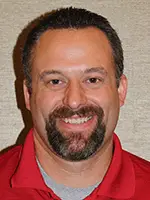
Built to last: Long-term effects of heifer rearing environments on hoof health – Travis Busman, Sure Step Consulting International, LLC
 By Peggy Coffeen, Progressive Dairyman
By Peggy Coffeen, Progressive Dairyman
The problems dairy producers see in hoof health start long before those animals enter the milking herd, according to Travis Busman, a hoof trimmer and consultant with Sure Step Consulting International, LLC.
In fact, Busman told Vita Plus Calf Summit attendees that irreversible damage to the coffin bone, located inside of the hoof capsule, can occur in heifers less than one year old. The dairies where he sees this happening often have one common denominator: sand-bedded heifer facilities.
“What we are doing with these heifers is wearing their soles thin at six to seven months of age,” he said. “As soon as we have a thin sole, we begin to get bone spurs. I’m convinced that what’s starting this process is the sand barns.”
Sand, often compounded by several other risk factors, causes big problems as those animals mature. When the strong, dense wall horn that makes up the outside of the hoof is weakened by excessive wear, the laminae tissue inside a young, growing calf’s hoof can become inflamed. This not only causes the claw to become wider, but it also leads to ossification of the delicate bones inside the hoof and, ultimately, bone spurs. Irregular horn growth results as the sole takes on a convex shape and the toes curl upward or twist, coined “corkscrew claw.”
“Bone spurs around the coffin joint limit mobility and cause pain,” Busman said. “When we have spurs, we know they are caused by inflammation. This takes time to develop … this occurred during the heifer-rearing period, no questions about it.”
Busman identified other common heifer-raising conditions that, when combined with a non-yielding surface like sand, exacerbate inflammation in heifers. Over-crowded facilities force heifers to spend more time on their feet, increasing pressure. He also observes excessive wear in barns with headlocks or feed rail slats, as the force placed on the heifers’ shoulders as they reach for feed impacts the wear on front feet. Limit feeding can make this even worse.
Though a genetic component that causes a cork screw claw exists, Busman explained this is clearly an issue of environment when it occurs at the rates he sees, impacting a majority of animals in a group.
Heifers suffering from the negative effects of sand housing begin showing signs at an early age, and by the time they reach the milking herd, the damage is done. Affected cows have the signature hoof abnormalities, and the pain in the joint caused by bone spurs causes some cows to waddle as they walk or stand on the outside toes. They are also more vulnerable to digital dermatitis and other hoof issues. Though corrective hoof trimming can provide short-term relief, Busman said that alone will not stop or correct the problem.
“Trimming them younger isn’t the answer,” he added. “It goes back to heifer rearing.”
Busman offered the following advice to prevent setting heifers up for a lifetime of poor hoof health:
- Do not put heifers on sand prior to 13 months old
- Limit pen size
- Create dead-end alleys in long barns to prevent heifers from running
- Relieve stress of sand exposure by putting heifers on dry lots when possible or bedding pens with alternative products, like sawdust
- Avoid headlocks and slats along feeding areas
- Avoid limit feeding
| Category: |
Animal health Facility design Starting Strong - Calf Care |

